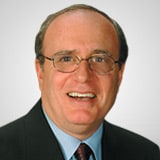A more defensive posture is best as 2011 draws to a close, says Mark Leibovit, but as bullish forces prevail in 2012, traders and investors can use select ETFs to earn safe, steady profits.
My guest today is Mark Leibovit. We’re talking about the overall markets and various sectors as we finish 2011 and go into 2012.
Mark, what is your overall view of some good opportunities as we finish out the year and go into the New Year?
I’m on the defensive here because I think the market is in the near-term downtrend, so what I basically am doing is trading the short side via inverse ETFs in the market.
For those who are a little more conservative, I would say to be in cash right now waiting for a buying opportunity, or perhaps be in the bond market, which is a hedge to a declining market. I don’t think these patterns are going to last for any great length of time.
See related: Safe Hedges That Always Work
My current feeling is by early next year, January or February 2012, we should probably end this little bear corrective cycle, particularly with an election coming up next year and with rumors that there might be a QE3 coming from Mr. Bernanke.
So right now, be a little defensive and let’s reevaluate it after January and February.
Of course, I’m using my volume indicators and other tools, and we’ll see if something changes before then, but I’d be defensive in the markets right now unless you are willing to play the inverse side.
The volume reversal indicator that you mentioned, does that work really well in these ETFs, the inverse ETFs?
Absolutely. It works in all of the ETFs. It works in every market. It works in the commodity markets, it works in the individual stocks, as well as ETFs.
That’s what we focus on mainly is the ETF trades. I sort of left the world of individual stocks once the ETFs came in.
Occasionally, we have an individual stock trade in there, but I rarely focus on it because why come in on a Tuesday morning and there’s an earnings surprise or something in one stock that you’re in, or you’ve got a bad technical signal and you’ve got too many eggs in one basket?
I’d rather be in the semiconductor ETF or the gold ETF if I liked that group rather than pick one stock and have made a bad choice, by luck or design, so that’s where I’m at.
So the ETFs that you are using, do you recommend typically getting into an ETF that’s in a sector that you feel is right or an overall market like the S&P 500?
Both. It just depends if the sector is coming to life on a volume basis.
If natural gas finally turns, for example, and everybody is looking for bottom in natural gas—which really hasn’t come, and it’s actually been a sharp downtrend—then I’d be recommended the United States Natural Gas Fund (UNG), for example, which is the ETF for natural gas.
So yes, definitely we focus on a sector if we see an opportunity, and we do concentrate quite a bit on the Spyder Trust (SPY) and the Powershares QQQ Trust (QQQ) and the Diamonds Trust (DIA). Whether you’re long or short in the Dow, love that stuff.
NEXT: Play Sizable Market Moves without All the Risk
|pagebreak|It’s not leveraged, you’re not going to make a killing, but it’s a conservative way of making a living in the markets, and that’s why I’m so proud of what I’ve done over the years.
I consider myself a survivor, and we’ve topped timing and we’re still here, and yes, we’re not going to catch every move, every day, but we basically have caught the bigger moves.
The preface of my book which came out earlier this year, The Trader’s Book of Volume, I write about how I’ve never been caught in a market crash in the last 30 years. In fact, I’ve warned and got people out of every market crash.
Not that I knew a crash was coming, but there were warning signs to go to cash and get out, and that’s what I’m proud of, that I’m not in that camp that was down 50% because they were long some mutual fund. I’m in cash when those disasters hit, and that’s what I really am proud of.
I think that if you can preserve capital for your clients and subscribers over the years, you’ve done a great job considering the environment we’ve been in.
One last question about the markets: How about large caps versus smaller mid-caps?
No specific ideas. I would probably just go for a smaller-cap ETF or the iShares Russell 2000 Index Fund (IWM).
For example, if I got bullish in the markets, they all tend to track each other pretty much, believe it or not.
I think we overanalyze. If you put a chart up on the wall and track the Dow over the Russell or the mid-cap 400, you’ll see they all basically track each other.
If you get a good signal and there’s a reversal in the Dow or the S&P, you’ll probably see it in the Russell and the others as well, so when we get the turn, I’ll be in all of them, but probably on the ETF level, not the individual stock.
I don’t get caught in the Apple (AAPL) or the Netflix (NFLX) world, even though I have a lot of clients and friends that trade that stuff. I just say buy the Nasdaq if you want to play the move in the Nasdaq, which tends to be heavily weighted to those big names anyway.
Related Reading:





















